
The military’s deep penetration into all aspects of American life has hampered the development of a strong anti-war movement—at a time when it is desperately needed.
Tens of thousands of protesters have taken to the streets across the U.S. in the last few years to decry police brutality, to oppose the Supreme Court’s decision to restrict abortion rights, and to contest what they believed was a rigged election (the January 2021 Capitol riots).

Only small hardy bands by comparison have taken to the streets to protest record military budgets—approaching $1 trillion under Joe Biden—or the illegal bombing of Syria, expansion of U.S. troops in Africa, provision of $20 billion in U.S. military aid to Ukraine, and military provocations directed against China.
Joan Roelofs’[1] new book The Trillion Dollar Silencer: Why There Is So Little Anti-War Protest in the United States (Atlanta: Clarity Press, 2022), starts with an important question: “Why is there so much acceptance and so little protest against our government’s illegal and immoral wars and other military operations?”
Her answer is simple and convincing: Money.
While successful propaganda, fear and distraction are important, the military-industrial complex that Dwight Eisenhower warned about in his Farewell Address in 1961 has penetrated so deeply into American life that much of the American public has essentially bought into acquiescence.
Roelofs writes that “the economic impact of the military-industrial complex is a highly effective silencer.”

Particularly important is the fact that military bases have been placed strategically across the U.S., often in remote rural areas, where they become the life blood of economic development.
Millions of American workers find jobs with military contractors or their subsidiaries, which finance scholarships and internships for college students who have no knowledge of the anti-Vietnam War protests that once roiled their campuses.
According to Roelofs the triumph of military Keynesianism in the U.S. is evident by the fact that military spending consumes half of the federal government’s discretionary budget.
This type of spending has a great impact on the economy, she notes, because a) it is recession proof; b) is a boon in rusted and depressed areas of the country; c) does not rely on consumer whims; and d) has a huge multiplier effect: contractors, subcontractors, and employee spending, as well as military bases and installations are economic hubs of their region, supplying customers for real-estate agents, landscapers, restaurants, furniture shops, museums and yoga studios, while enhanced tax receipts support social services, education, infrastructure and culture.
Many in the middle class benefit from weapons manufacturers stocks in their mutual fund portfolios. In Roelofs’ home state of New Hampshire, the F-35 program supports 55 suppliers—35 of which are small businesses—and more than 900 direct jobs, many of them located at BAE Systems in Nashua, which Money Magazine twice deemed the “best place to live in the U.S.”
According to Business Review, the F-35 program “generates over $481 million in economic impact in the state.”

In May 2022, BAE Systems—which manufactures the M777 howitzer, a most “lethal weapon” that has been used to shell the Donbas in eastern Ukraine—opened a new plant in Manchester whose focus was on the development of electronic warfare; it was slated to employ hundreds of people.

With more revenues, BAE Systems will be able to expand on its million plus yearly charitable donations, which has helped fund STEM (science, technology, engineering and math) education programs for kids in the state.
Endearing Itself to the Public
Military industry always gets its way through massive campaign contributions to politicians from both major political parties and extensive lobbying. Congressmen and women are well aware of the benefits to their districts and often hold weapons industry stock.
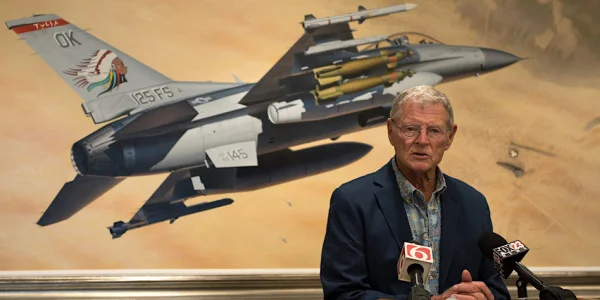
The industry burnishes its image through extensive philanthropic endeavors and support for many civic institutions, especially those benefiting youth and minorities. Among them is the Boy Scouts.

The military further sponsors video games, sports events, parades and movies that glorify and normalize militarism. Roelefs writes that “extremely well-funded recruitment efforts in schools include ‘fun simulations’ of warfare.”

Military-Industrial-Academic Complex
Since the 1960s, military industry has made huge inroads on college campuses by subsidizing national security institutes and business and engineering and even social work schools and grants for research and funding to train the next generation of weapons-producers.

The Human Terrain System program in 2007 harked back to the Cold War-era U.S. Army Project Camelot in employing social scientists to obtain anthropologic and ethnographic data in Iraq and Afghanistan to assist in U.S. counterinsurgency operations.
Presidents of major universities have increasingly come from a military or CIA background. Former Defense Secretary and CIA Director Robert Gates, as an example, served as President of Texas A&M University, while Admiral William McRaven, who oversaw the Joint Special Operations Command (JSOC) which specialized in assassination, served as Chancellor of the University of Texas.

Whereas at one time, faculty were ashamed to admit that they received research funding from a military agency, now only 12% said they would feel any stigma. And professors at even supposedly liberal colleges and universities have lost their positions because of opposition to U.S. foreign policy.
Rise and Fall of Anti-War Movements
According to Roelofs, while the military has always been part of U.S. culture, the 19th century saw the development of a respectable pacifist counter-culture that was driven in part by the strength of enlightenment thought and radical Christianity.
Henry David Thoreau became famous for refusing to pay his taxes during the 1846-1848 Mexican-American War—which was also strongly opposed by a young Abraham Lincoln.


A sharp turn occurred during World War I, when pacifists were demonized in a government-orchestrated propaganda campaign and jailed.
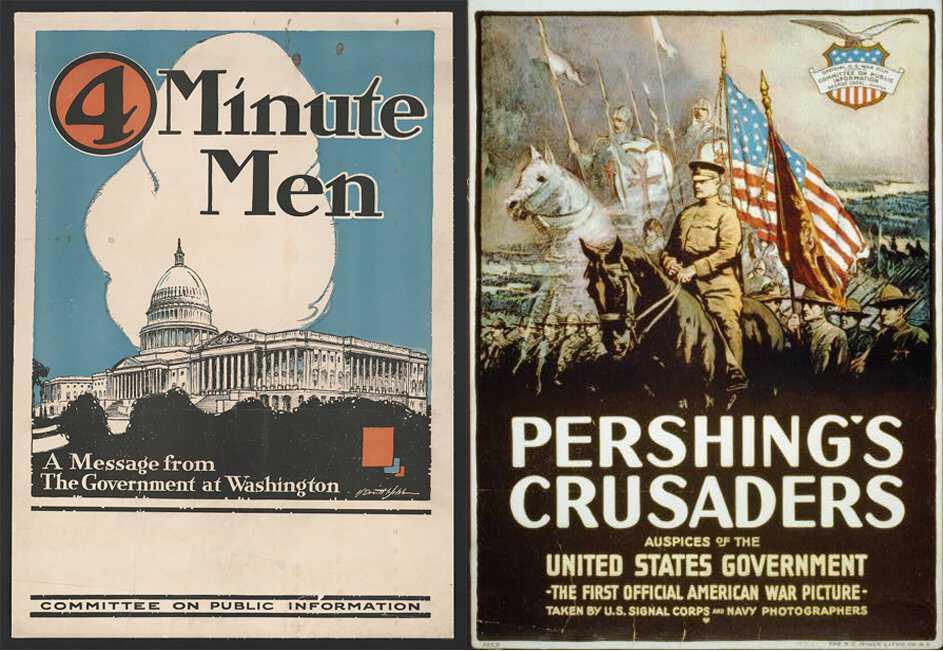
Subsequently, those who opposed war, like Secretary of State Frank Kellogg—who promoted the 1928 Kellogg Briand Pact outlawing war—were derisively called “isolationists.”

In the 1930s, the America First Committee emerged as the largest anti-war movement in U.S. history, but dissolved immediately after Pearl Harbor and there were few if any protests against the Dresden and Tokyo firebombing campaigns and dropping of the two atomic bombs, or against the Korean War.
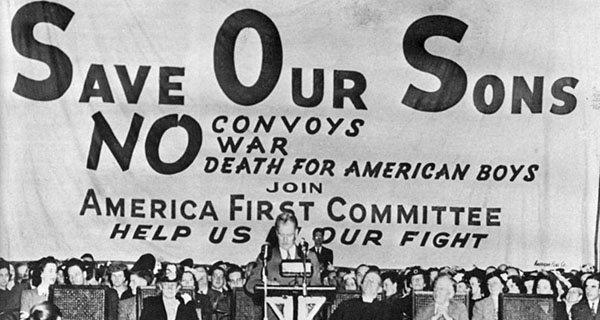
World War II and the Cold War brought universities, and many industries and civilian institutions, into partnership with the burgeoning warfare state. One of the most important of the New Deal programs, the Tennessee Valley Authority (TVA) became instrumental in enabling large-scale nuclear weapons production by damming the rivers near the Oak Ridge National laboratories in East Tennessee.
With a Cold War mentality deeply ingrained, protests were slow to develop against the Vietnam War and the anti-war protest in the late 1960s proved to be short-lived. The government abolished the draft and found new ways to wage war with a limited American footprint—so the sons and daughters of the middle-class would never have to fight.
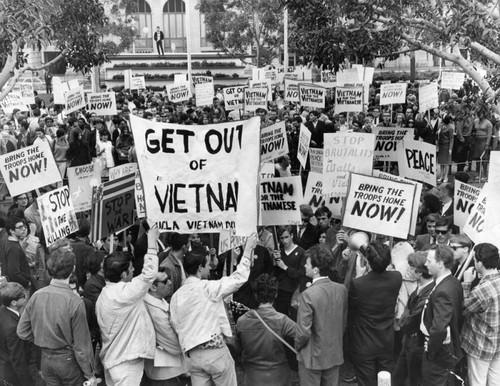
Early protests against the Iraq War did not persist and have not been followed up by any wide-scale mobilizations against military interventions in Afghanistan, Libya, Syria and now Ukraine, where it has been instilled in the public that Russia is the aggressor.
William D. Hartung, a fellow at the non-interventionist Quincey Institute for Responsible Statecraft, wrote that “military contractors are riding high [today], and Ukraine just gives them another argument as to why things need to continue onwards and upwards.”[2]
Cooptation of the 1960s’ Left
Roelofs emphasizes how in the wake of the 1960s protest movement, corporate foundations began more aggressively funding groups that advocated societal reforms without threatening the U.S. Empire or capitalism.
A 1969 exposé in Ramparts magazine, written by David Horowitz, uncovered that the CIA used at least 46 foundations to funnel money to organizations whose main purpose was to defuse anti-war protest and co opt or divide the political left in the U.S.
The National Endowment for Democracy (NED) was set up in the 1980s to promote regime change propaganda that spotlighted the oppression of minority groups in countries that forged independent foreign policies from the United States.

Related to this was the sponsorship of monitoring organizations that framed human rights abuses as “deviations” committed by bad people, without connection to foreign corporations or U.S. military training or imperial designs. A key effect was to channel activist energies, especially of youth, into pro-interventionist groups like Free Tibet and Save Darfur, which had a strong presence on college campuses at the time that the War on Terror and its associated atrocities were being expanded.

War profiteers like Bechtel, which has received massive contracts to build U.S. military bases abroad, have become increasingly savvy in setting up their own foundations designed to defuse antiwar protest and neuter the political left. The organizations they support may do some good but have abandoned efforts to link environmental destruction and the crisis in public education with bloated military spending, while never questioning the prevailing political-economic order.

According to Roelofs, Corporate America additionally coopted the 1960s’ New Left movement, which advocated for a fundamental reorientation of U.S. foreign policy, by promoting more minority hires and presenting women’s involvement in the military and with military contractors as a triumph of the feminist movement.

The Defense Advanced Research Projects Agency (DARPA)—which produces ghastly new weapons systems straight out of science fiction novels—created a fake humanitarian image, meanwhile, by emphasizing its development of scientific solutions for helping wounded veterans, including through the manufacture of cutting-edge prosthetic devices.
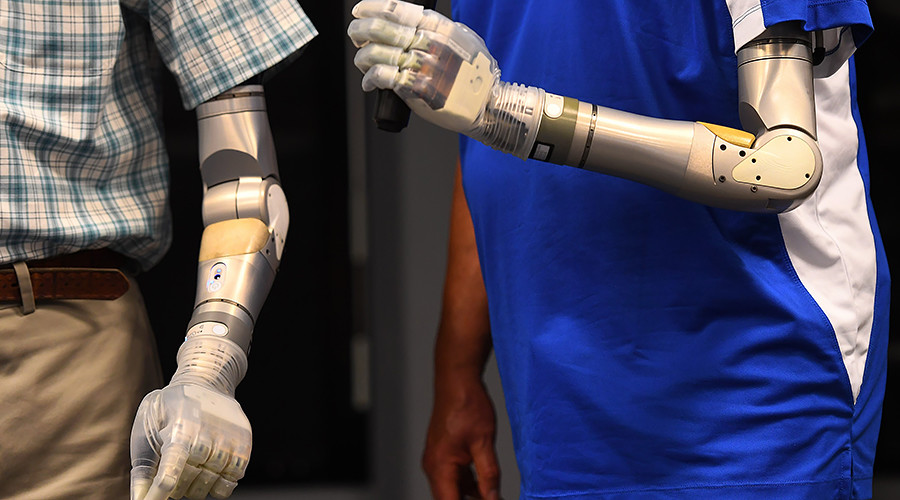
Suffering the Consequences
While military Keynesianism props up the economy, an over-reliance on military spending is slowly destroying the U.S. not only spiritually, but also economically, in a holistic sense.

In a 1989 volume of The Annals of the American Academy of Political and Social Science devoted to “universities and the military,” MIT Physics professor Vera Kistiakowsky, one of the country’s outstanding scientists of the 20th century, wrote that “Pentagon funding of university research has no benefits. Preferential funding of weapons has had its economic consequences, witnessed by our deteriorating civilian industrial infrastructure, our negative balance of trade, and our mounting deficit. We have not invested in civilian research at a level adequate to these pressing problems, and will continue to suffer the consequences until we do.”
These remarks seem even more prophetic and relevant in 2023. The trillion dollar silencer may backfire if the problems described by Kistiakowsky continue to intensify.

-
Roelofs is Professor Emerita of Political Science at Keene State College in New Hampshire. ↑
-
Quoted in Eric Lipton, Michael Crowley and John Ismay, “Bonanza For Arms Makers As Military Budget Surges,” The New York Times, December 18, 2022, A8. ↑
CovertAction Magazine is made possible by subscriptions, orders and donations from readers like you.
Blow the Whistle on U.S. Imperialism
Click the whistle and donate
When you donate to CovertAction Magazine, you are supporting investigative journalism. Your contributions go directly to supporting the development, production, editing, and dissemination of the Magazine.
CovertAction Magazine does not receive corporate or government sponsorship. Yet, we hold a steadfast commitment to providing compensation for writers, editorial and technical support. Your support helps facilitate this compensation as well as increase the caliber of this work.
Please make a donation by clicking on the donate logo above and enter the amount and your credit or debit card information.
CovertAction Institute, Inc. (CAI) is a 501(c)(3) non-profit organization and your gift is tax-deductible for federal income purposes. CAI’s tax-exempt ID number is 87-2461683.
We sincerely thank you for your support.
Disclaimer: The contents of this article are the sole responsibility of the author(s). CovertAction Institute, Inc. (CAI), including its Board of Directors (BD), Editorial Board (EB), Advisory Board (AB), staff, volunteers and its projects (including CovertAction Magazine) are not responsible for any inaccurate or incorrect statement in this article. This article also does not necessarily represent the views the BD, the EB, the AB, staff, volunteers, or any members of its projects.
Differing viewpoints: CAM publishes articles with differing viewpoints in an effort to nurture vibrant debate and thoughtful critical analysis. Feel free to comment on the articles in the comment section and/or send your letters to the Editors, which we will publish in the Letters column.
Copyrighted Material: This web site may contain copyrighted material the use of which has not always been specifically authorized by the copyright owner. As a not-for-profit charitable organization incorporated in the State of New York, we are making such material available in an effort to advance the understanding of humanity’s problems and hopefully to help find solutions for those problems. We believe this constitutes a ‘fair use’ of any such copyrighted material as provided for in section 107 of the US Copyright Law. You can read more about ‘fair use’ and US Copyright Law at the Legal Information Institute of Cornell Law School.
Republishing: CovertAction Magazine (CAM) grants permission to cross-post CAM articles on not-for-profit community internet sites as long as the source is acknowledged together with a hyperlink to the original CovertAction Magazine article. Also, kindly let us know at info@CovertActionMagazine.com. For publication of CAM articles in print or other forms including commercial internet sites, contact: info@CovertActionMagazine.com.
By using this site, you agree to these terms above.
About the Author

Jeremy Kuzmarov holds a Ph.D. in American history from Brandeis University and has taught at numerous colleges across the United States. He is regularly sought out as an expert on U.S. history and politics for radio and TV programs and co-hosts a radio show on New York Public Radio and on Progressive Radio News Network called “Uncontrolled Opposition.”
He is Managing Editor of CovertAction Magazine and is the author of six books on U.S. foreign policy, including Obama’s Unending Wars (Clarity Press, 2019), The Russians Are Coming, Again, with John Marciano (Monthly Review Press, 2018), Warmonger. How Clinton’s Malign Foreign Policy Launched the U.S. Trajectory From Bush II to Biden (Clarity Press, 2023); and with Dan Kovalik, Syria: Anatomy of Regime Change (Baraka Books, 2025).
Besides these books, Kuzmarov has published hundreds of articles and contributed to numerous edited volumes, including one in the prestigious Oxford History of Counterinsurgency .
He can be reached at jkuzmarov2@gmail.com and found on substack here.




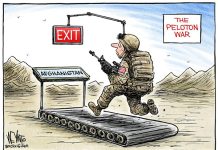






no one “protests” where it matters do they? no protests at govt buildings or homes of those govt parasites.
Partisan Democrats protest only the wars of Republican Presidents, and partisan Republicans failed to protest Clinton’s bombing of Serbia or even Obama’s military adventurism in Libya, Yemen and Syria. A few are making a feeble attempt to block funds for Ukraine, but will they remain consistent when the next Republican is elected? We shall see.
Meanwhile, the Empire is collapsing of its own weight. One day, the US will attempt to intervene in Mexico, will be kicked out and the guerrilla war will spill over into the Southwest while the US will be unable to import from the south. That will be the end of the New Rome.
All wars are Banker’s Wars. General Smedley Butler USMC (Dec)
Brilliant article, Jeremy, but I´d phrase the beginning slightly differently “The military’s deep penetration into all aspects of LIFE in all armed countries in the world has hampered the development of a strong anti-war movement at a time when it is desperately needed.” Whether making and selling or buying military articles, from bullets to warships, there is nothing else politicians can do with articles of death or killing toys. There is no point of blaming politicians, but all those who accept militarism. What´s the point in training armies in the Art of fighting and killing (not because of a wish to kill but to avoid being killed). If YOU were the President of the United States youd be doing the same.
Blame Armamentism, Militarism, Armed Forces, and the millions of workers worldwide who make a living in the War Industry, to kill millions of other workers, all innocent people. More ABSURDITY I cannot imagine.
AND YOU ‘TRILLION’ DOLLAR SILENCER IS MUCH MORE, UNIVERSALLY SPEAKING. AND ALL THOSE TRILLION DOLLARS ARE OF INCREASED DEBTS.
Very informative.